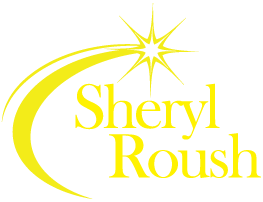Using your voice for advocacy, influencing decisions, policies and actions
As you are preparing for your upcoming presentation, here are a dozen solid tips to utilize – that will help you Sparkle When You Speak!™
Purpose?
What is your objective? Premise? Desired outcome? Everything in your presentation (examples, stories, facts, graphics) must support this. Open your presentation with an overview and the benefits. Close with a summary.
Who?
Who are you speaking to? What are their interests, values, commonalities? Titles? Donors? Guests? Volunteers? Demographics (age, sex, education), geographics (local, state, regional, national), psychographics (buying patterns, regular stores, common products/services)?
What?
What do you need to communicate? Facts, statistics, stories, examples? Use words and sentences that will be easily understood. Explain any jargon, acronyms or slang used. Offer clear examples to help illustrate your message.
When?
What time is your presentation? Learning is most conducive before Noon. After lunch and evening presentations require humor to enhance their attention span. Over a meal (or during dessert), consider a microphone with higher volume levels, with more engagement and interaction with your audience.
Where?
What is the physical location of your presentation? Visit the room early, rearrange the furniture if needed (u-shaped, theatre, classroom). Check out all equipment and visibility from the “back-row” if you are using visual aids and slides.
Why?
Why they should listen to you – the value, worth or interest of what you are going to say. Have the facilitator introduce you by your credentials and topic.
How long?
What is the duration of your presentation? Preview the agenda. Be prepared to shorten your program if the schedule ahead of you runs long.
Content?
Create a beginning (10% of time), a middle (80%) and an ending (10%). Even if the middle flows organically, have a solid–and well-practiced–opening and conclusion.
Delivery?
How can you best convey your message to support the Purpose? Be authentic in your style. Will you speak from a lectern, or from the floor?
Visuals?
Craft visual aids with your audience in mind. Consider size of group, obstacles in the room (pillars, lecterns, flipcharts). Be consistent in design. Avoid “speaking to the slides” by facing your audience, referencing the slides.
Handouts?
Attendees prefer to have materials at the beginning of the presentation, and appreciate being able to take notes and have a take-away. Unless vital, do not include every slide in the handout, be selective. Include your contact information, copyright notice, and organization Logo as appropriate.
Lighting?
If showing slides, check the lighting ahead of time. If speaking after lunch or dinner, keep the slide background light/white with text in darker colors, and avoid dimming the room lights as people may drift off, or talk amongst themselves.
Sheryl Roush, is President/CEO of Sparkle Presentations, Inc., based in San Diego, California. She works with organizations that want to sharpen their communication skills to garner attention and get more business. As a speaking coach, she brings out the Sparkle Factor in her clients, while unveiling their uniqueness and authenticity.
For more information, see www.SherylRoush.com
or for coaching, email Sheryl@SherylRoush.com

